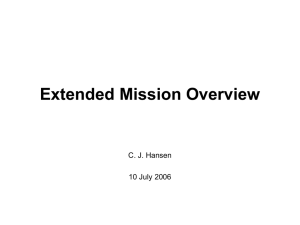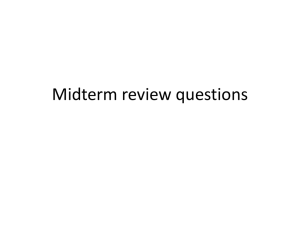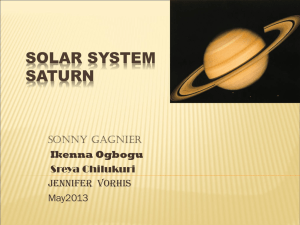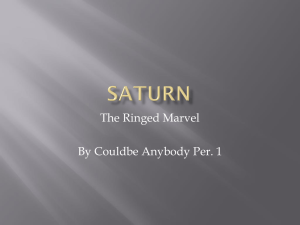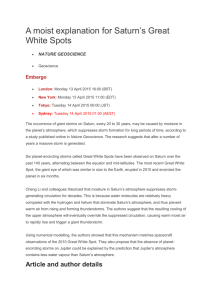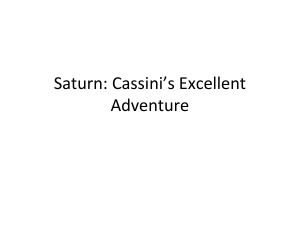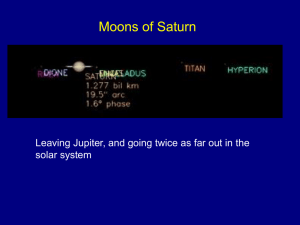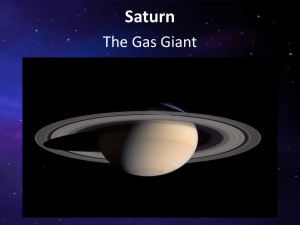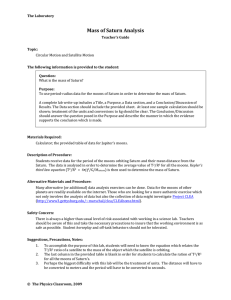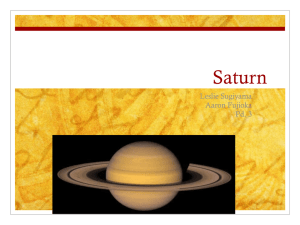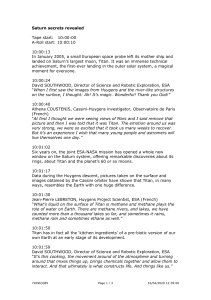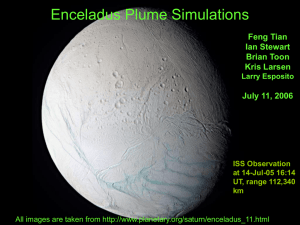Video Quiz: Saturn`s Mysterious Moons Name: Date: ______ Name
advertisement
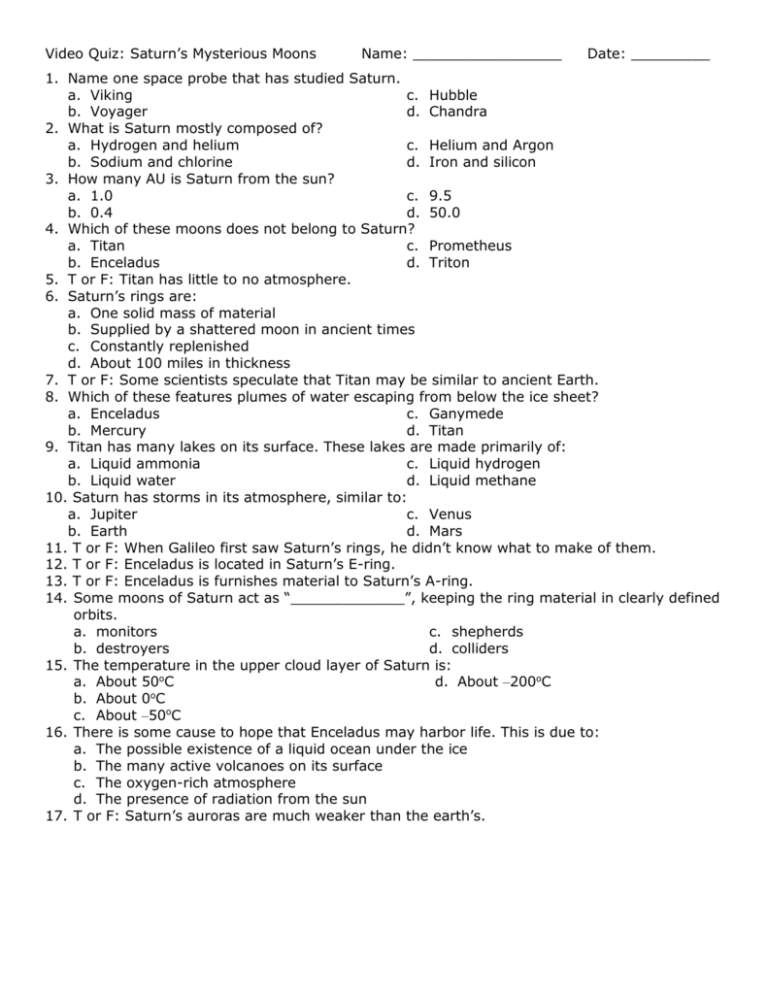
Video Quiz: Saturn’s Mysterious Moons Name: _________________ Date: _________ 1. Name one space probe that has studied Saturn. a. Viking c. Hubble b. Voyager d. Chandra 2. What is Saturn mostly composed of? a. Hydrogen and helium c. Helium and Argon b. Sodium and chlorine d. Iron and silicon 3. How many AU is Saturn from the sun? a. 1.0 c. 9.5 b. 0.4 d. 50.0 4. Which of these moons does not belong to Saturn? a. Titan c. Prometheus b. Enceladus d. Triton 5. T or F: Titan has little to no atmosphere. 6. Saturn’s rings are: a. One solid mass of material b. Supplied by a shattered moon in ancient times c. Constantly replenished d. About 100 miles in thickness 7. T or F: Some scientists speculate that Titan may be similar to ancient Earth. 8. Which of these features plumes of water escaping from below the ice sheet? a. Enceladus c. Ganymede b. Mercury d. Titan 9. Titan has many lakes on its surface. These lakes are made primarily of: a. Liquid ammonia c. Liquid hydrogen b. Liquid water d. Liquid methane 10. Saturn has storms in its atmosphere, similar to: a. Jupiter c. Venus b. Earth d. Mars 11. T or F: When Galileo first saw Saturn’s rings, he didn’t know what to make of them. 12. T or F: Enceladus is located in Saturn’s E-ring. 13. T or F: Enceladus is furnishes material to Saturn’s A-ring. 14. Some moons of Saturn act as “_____________”, keeping the ring material in clearly defined orbits. a. monitors c. shepherds b. destroyers d. colliders 15. The temperature in the upper cloud layer of Saturn is: d. About ‒200oC a. About 50oC b. About 0oC c. About ‒50oC 16. There is some cause to hope that Enceladus may harbor life. This is due to: a. The possible existence of a liquid ocean under the ice b. The many active volcanoes on its surface c. The oxygen-rich atmosphere d. The presence of radiation from the sun 17. T or F: Saturn’s auroras are much weaker than the earth’s.
